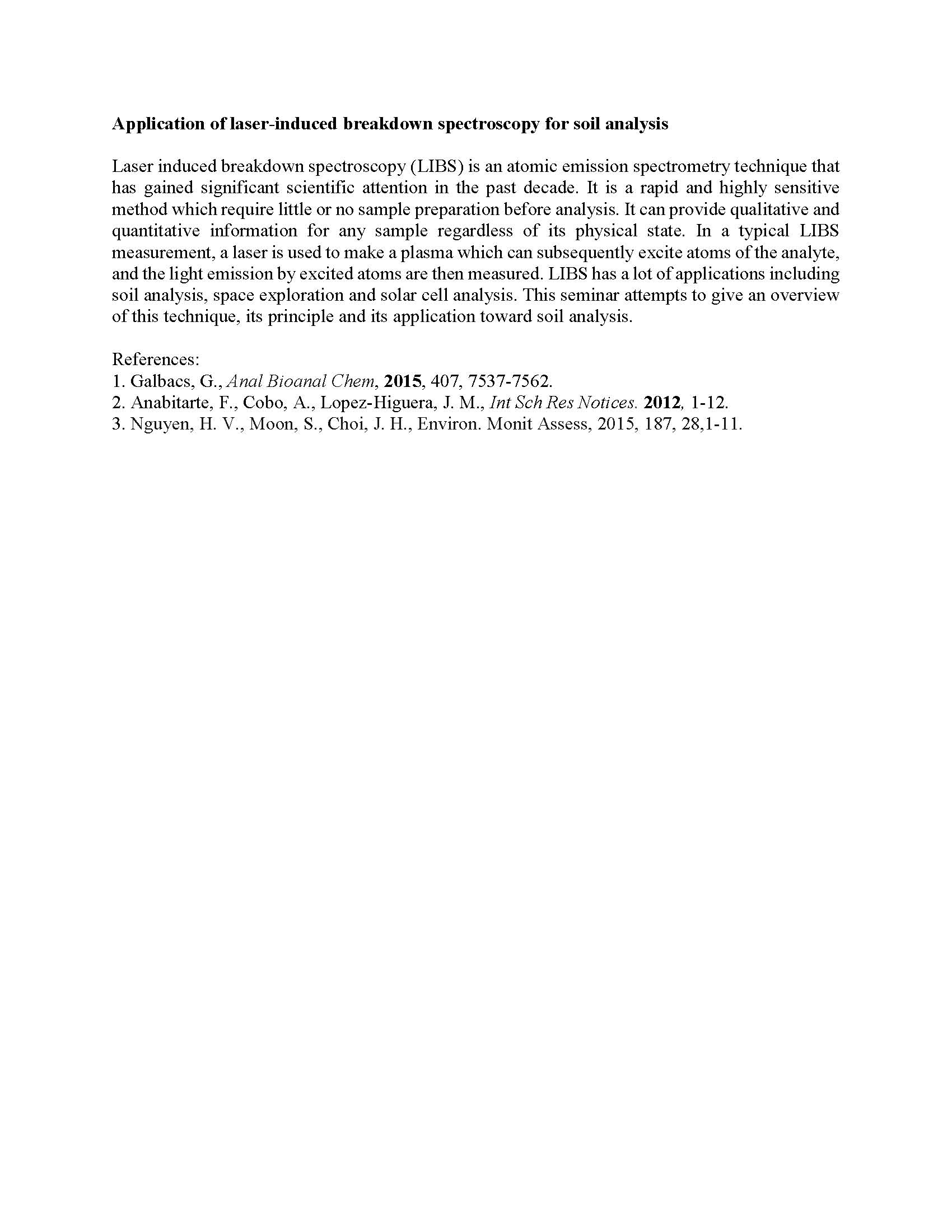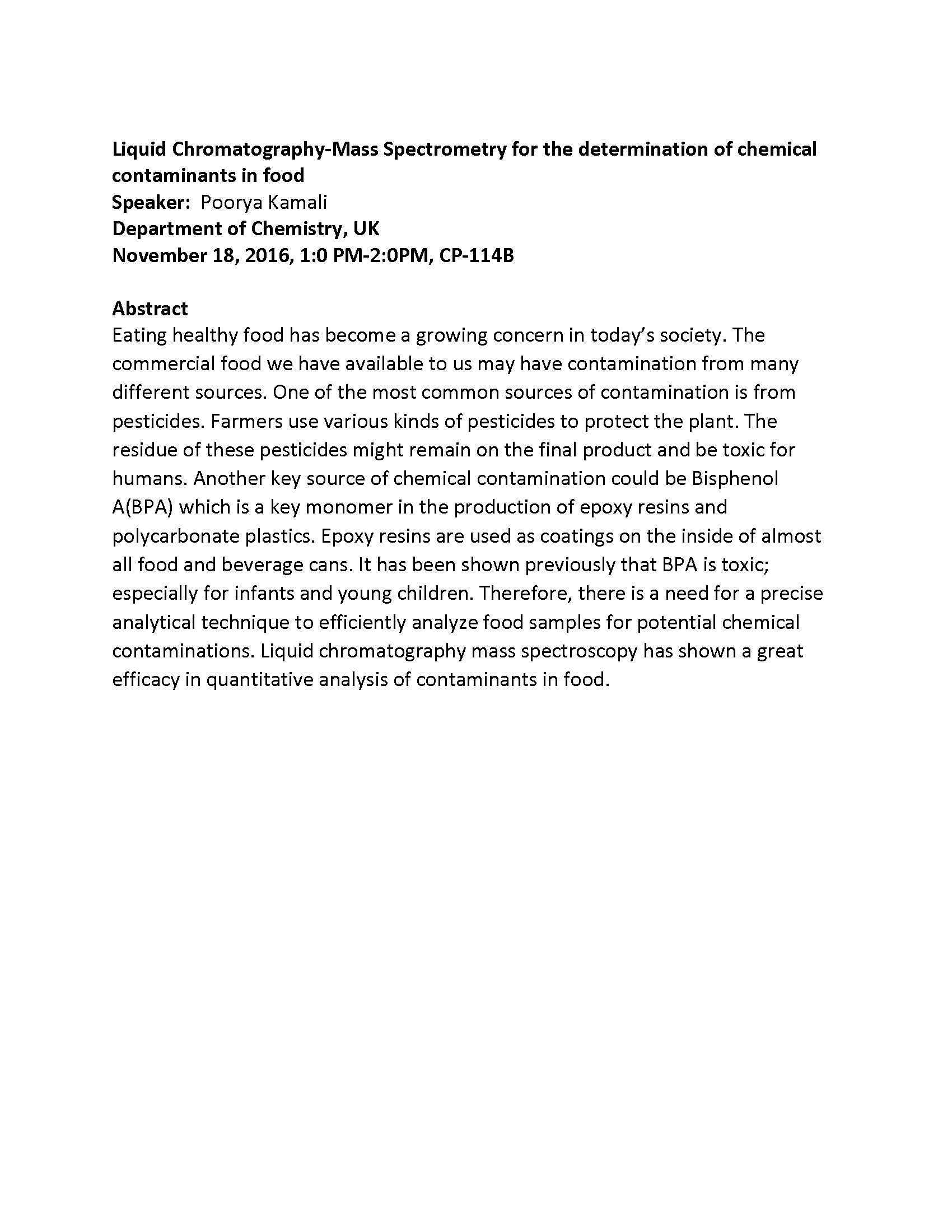CHE 776
Organic Chemistry Seminar
Organic Chemistry Seminar
Organic Chemistry Seminar
Organic Chemistry Seminar
Analytical Chemistry Cumulative Exam Review
Application of laser-induced breakdown spectroscopy for soil analysis

Analytical Chemistry Seminar

Zero Mode Wave guides (ZMWs), powerful tool for single molecule spectroscopy
Zero Mode Waveguides (ZMWs), a Powerful Tool for Single Molecule Spectroscopy
Abstract
Single molecule fluorescence techniques are a powerful tool for the investigation of heterogeneity in biological systems. Despite many advantages, it is still a challenge to ensure a single molecule in the observation volume at physiological concentration levels with sufficient signal to noise for detection. For solution based studies, the concentration typically has to go down to nM to pM level for single molecule resolution which is much lower than physiological concentrations for numerous enzymes or proteins. On the other hand, the fluorescent probe has to be bright enough to distinguish the fluorescence signal from background noise or cellular auto fluorescence. Zero mode waveguides (ZMWs), arrays of nanosized holes on metal sheets, have been used to address both concentration and fluorescence brightness issues. Extremely low observation volumes (10−21 L) inside ZMWs holes offer single molecule resolution at µM to mM concentration; while surface plasmon effects within the ZMWs can also enhance the signal intensity from the fluorescent emitters resulting in improved signal to noise. In this talk, I will discuss the basics of single molecule spectroscopy, some of its application mostly to the biological field and its challenges, and discuss the use of ZMWs as a complementary tool for improved single molecule spectroscopy.
References:
- Martin, W.E, Srijanto, B.R., Collier, C.P., Vosch,T., Richards, C.I. A Comparison of Single-Molecule Emission in Aluminum and Gold Zero-Mode Waveguides. Physical chemistry A, 2016, 120, 6719−6727
- Moerner, W. E.; Fromm, D. P. Methods of Single-Molecule Fluorescence Spectroscopy and Microscopy. Rev. Sci. Instrum. 2003,74, 3597−3619.
- Levene, M. J.; Korlach, J.; Turner, S. W.; Foquet, M.; Craighead, H. G.; Webb, W. W. Zero-Mode Waveguides for Single-Molecule Analysis at High Concentrations. Science 2003, 299, 682−686.
